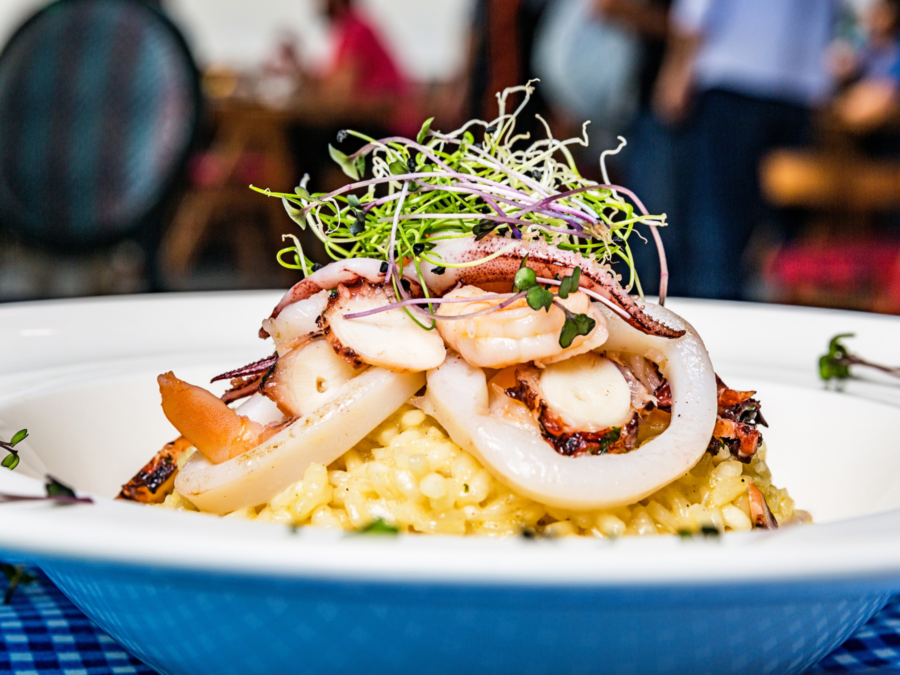
NASA has done all kinds of wild and imaginative experiments in space—such as successfully brewing beer in space to (unsuccessfully) growing mouse embryos. We’ve sent sea urchins, fish, amphibians, birds, and even bees to space. Why? Just bee-cause.
In all seriousness, scientists were studying to see how weightlessness affects biology and animal behavior—and forcing different forms of life to adapt to microgravity produced some pretty strange results (Fun fact: sea urchin sperm swim faster in microgravity than on Earth).
Now, imagine how difficult it is for humans to master walking, or eating, or peeing, or doing anything in microgravity. How are feeble-minded insects able to fly in space—a place where even humans lose their sense of what is up and what is down?
Inquiring minds want to know. In Reddit’s Ask Science community, user amart89 asks: “How would a bee (or any flying insect) behave in microgravity? Would flying be normal?”
http://bit.ly/1Ut5EW6
For the common house fly, space can be considered a “no fly” zone—which is out of character for our pesky and winged evolutionary cousins, considering these scavenging bastards take great joy out of flying towards (and landing on) humans back on Earth.
But in one experiment, house flies mostly gave up on flying all together, according to a NASA memo referenced by Reddit user Cyanaman. Instead, their motions were limited to walking on walls. Interestingly, they did attempt to fly, but each sad attempt would only last for a few seconds at a time.
Jack Lousma, commander of 1982’s Space Shuttle Columbia, once wrote in his flight log: “The flies took to walking. They decided their wasn’t any use to flapping their wings and going out of control.”
Funny enough, moths that were born in space adapted ingenious methods to survive the conditions of microgravity. Much like the house fly, moths didn’t fly in space—but that doesn’t mean they gave up on aviation all together.
Instead, they figured out a way to float around without fluttering their wings. They just relaxed, chilled out, and let the low gravity conditions do all the work. It seems like they really took the “work smart not hard philosophy” to heart, which is probably why Lousma describes space moths as “very lively.”
On the other hand, moths who were born on Earth didn’t behave in the same way. Life aboard the space shuttle was a constant struggle. They had all sorts of problems in microgravity like easily loosing control when trying to fly or float, according to experiments performed aboard 1982’s space shuttle Columbia mission.
And in spite of what Futurama would have you bee-lieve about giant, murderous, space bees flying around the cosmos, “space bees” had the most trouble with flight during the 1982 mission.
According to the NASA memo, “honey bees were unable to fly normally and tumbled in weightlessness.” And Lousma added, “The bees have all gotten stationary.” It seems like our dear friend, the honey bee, just can’t catch a break. Even in outer space, they are threatened.
NASA scientists suspect that that the 14 bees aboard the flight may have been fatigued from inadequate amounts of food—or they just couldn’t master microgravity as well as the moth or house fly.
All hope is not lost, however, thanks to the experiments performed during the 1984 Space Shuttle Challenger mission–perhaps one of the most expansive and thorough bee studies in space. Aboard the spacecraft were two BEMS (or Bee Enclosure Modules), each containing 3400 worker bees and one queen bee.
During their first day in space, “some bees attempted to fly, but collided with the chamber walls,” describes the study. This shouldn’t really surprise you, considering humans collide with walls, too, when they experience microgravity for the first time.
Miraculously, by the end of the seven-day mission, the bees “showed complete adaptation to microgravity.” Crew members noted that bees were able to fly from one place to the other, which suggests that bees are capable of learning.
The bees were even able to produce honeycomb and the queen laid around 30 eggs (though all of them failed to hatch).

It looks like bees are not such fragile creatures after all. Though, as one reddit user notes, this may not be a good thing: “Are you saying we should breed Space Bees? Because we are about to wipe out bees on earth by accident. If we breed Space Bees, those fucks are going to be the size of cars and come back with a vengeance. I just know it”.
Via: UpVoted
FoodsCross is the brainchild of a small group of Greek friends who share the restless spirit of true pioneers and appreciate food as a need and a pleasure for body and soul. The people of FoodsCross invested in their very own curiosity and unwavering interest for real, tasty and healthy food.
OUR NUTRITIONIST LOVES QUESTIONS!
BECOME COMPANIONS ON THE FOODSCROSS JOURNEY AND STAY INFORMED ABOUT EVERYTHING CONCERNING THE CULTURE OF FOOD AND ITS WONDERS
CONTACT
FOODSCROSS NATURAL PRODUCTS
60th G. Marinou str.,
16777, Athens, Greece
T/F: +30 210 9600315
E: info@foodscross.com
FOODSCROSS
NATURAL PRODUCTS
